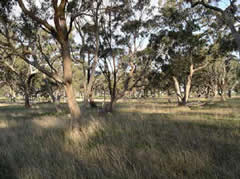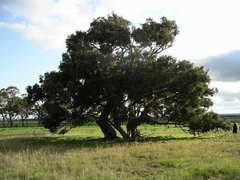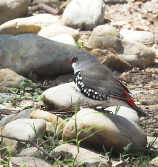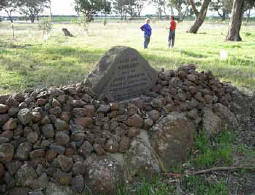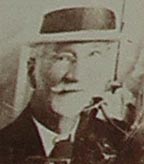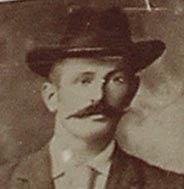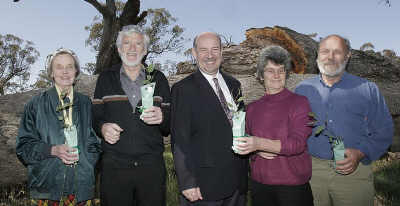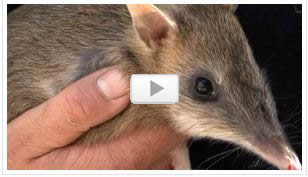
Pinkerton Forest
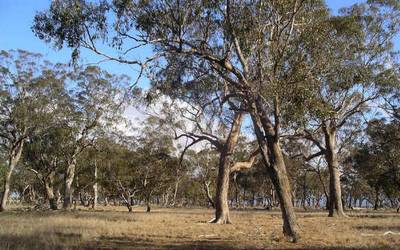 Pinkerton Landcare & Environment Group (PLEG) is concerned with the restoration of native grasslands and grassy grey-box woodlands, including the grassy woodland of Pinkerton Forest, the nearby native grassland in Mulla Mulla Grasslands (Bush's Paddock) and of the adjacent section of the Werribee River Volcanic Gorge, (which adjoins Western Water Treatment Plant at Surbiton Park) within the City of Melton, Victoria, Australia.
Pinkerton Landcare & Environment Group (PLEG) is concerned with the restoration of native grasslands and grassy grey-box woodlands, including the grassy woodland of Pinkerton Forest, the nearby native grassland in Mulla Mulla Grasslands (Bush's Paddock) and of the adjacent section of the Werribee River Volcanic Gorge, (which adjoins Western Water Treatment Plant at Surbiton Park) within the City of Melton, Victoria, Australia.
View a map of our restoration sites
View photos of Pinkerton Forest
Aboriginal occupants
 The two language groups of aboriginal people who shared the Werribee River as their common boundary, were the Woiwurung and Wathaurung. The Woiwurung were composed of several clans including the Kurung-jung-balluk who were located in the area between the Werribee River and Kororoit Creek.
The two language groups of aboriginal people who shared the Werribee River as their common boundary, were the Woiwurung and Wathaurung. The Woiwurung were composed of several clans including the Kurung-jung-balluk who were located in the area between the Werribee River and Kororoit Creek.
“The clan name means “red ground people” and perhaps refers to the red soil of the basalt country still evident in some areas” (Hilary du Cros and Phillipa Watt, Skeleton Creek Catchment - Aboriginal Heritage Study 1993)
The Aboriginal people who occupied the western side of the Werribee River down to Geelong were of the Mapeang-balluk clan of the Wathaurung language group. There appears to be have been a clear cultural distinction between the inland inhabitants such as the Woiwurung and the coastal people, the Bunerong. Culturally this distinction is expressed in terms of clans or ‘moiety’ which were designated as either ‘bunjil’ (eaglehawk) of ‘waa’ (crow). The ... Kurung-jung-balluk was of the ‘waa’ moiety while the people to the north and those west of the Werribee River were ‘bunjil’. (Barwick 1984)

Corroborees were held close to settlements at Melton and Bacchus Marsh in the 1840 -50’s. Groups of Aborigines were also known to have camped at Cobbledicks Ford (du Cros 1989a.28)
“Aboriginal people relied on a wide range of plant and animal foods, some of which were eaten regularly as staple foods. The types of resources available near the creek and associated swamps would have included fish, water birds, frogs, reptiles and small mammals. The Common Bull Reed, Bull rush and club Rush which provided edible leaves and rhizomes (Gott 1982). The club Reed was an important item. It is reported that in some areas on the plains it grew so abundantly “around marshes and billabongs that it resembled wheat (Gott in O’Neil 1993 11)”. The murnong or yam daisy (Microseris scapigera) was a fructan-rich tuber gathered as a staple food by Aborigine women in the study area (du Cros 1989a, Gott 1993).
 Gum, resin, bark and heart-wood were exploited by aboriginal people for the production of artifacts. Possum skin cloaks were used as a type of warm clothing (Presland 1983, du cros 1988). Stone artifacts were either selected from creek pebbles or quarried from suitable outcrops that occurred outside the study area.” 2.3.1 Exploitation of Resources and Movement Patterns from (Hilary du Cros and Phillipa Watt, Skeleton Creek Catchment - Aboriginal Heritage Study 1993)
Gum, resin, bark and heart-wood were exploited by aboriginal people for the production of artifacts. Possum skin cloaks were used as a type of warm clothing (Presland 1983, du cros 1988). Stone artifacts were either selected from creek pebbles or quarried from suitable outcrops that occurred outside the study area.” 2.3.1 Exploitation of Resources and Movement Patterns from (Hilary du Cros and Phillipa Watt, Skeleton Creek Catchment - Aboriginal Heritage Study 1993)
Invasion
The Western Region has had a particularly violent contact history. This was worst in the first ‘official’ year of settlement in 1836, although settlers were welcomed by Aboriginal people while they thought their presence was temporary. The impact of grazing by European stock caused a destruction of aboriginal food sources both by the herb and root plants being eaten out and from competition with kangaroo and wallaby. Retaliation by white settlers against Aborigines helping themselves to their sheep was brutal and a cycle of murders continued through the first decades of white settlement. (Cannon 1982 a & b, Barwick 1984, Presland 1983)
“After a space of a few years, many groups were starving and forced to rely on scanty government provisions administered by the Aboriginal Protector for the area or local settlers hand outs.
Pinkerton family
"From “ The Argus, Saturday, May 10, 1919
Eventually in 1840 the Pinkertons settled on Kororoit Creek. The plains were then covered with luxuriant herbage and waving purplish-brown kangaroo grass, 4 ft. high, was as thick as a crop of oats. Although the Werribee tribe of blacks was numerous (they came in hundreds at times) they molested no one at this station. Once the brass plate of the sundial was taken. Explanation was made to “King Benbow” that it must be immediately returned; the missing article was soon found. Occasionally Mr. Pinkerton cooked a large boiler of rice for the natives, who were all lined up with each a piece of bark to get a ladle full.”
Other settlers did not treat the aborigines so well.
“However arsenic laced flour and European introduced disease took the heavist toll on the aboriginal population (Popp 1979, Presland 1983) 2.3.2 “Contact History (Hilary du Cros and Phillipa Watt, Skeleton Creek Catchment - Aboriginal Heritage Study 1993)”
During the 1992 archaeological survey scar trees were found in the Pinkerton woodland, the bark was removed by Aboriginal people for use as containers or shields. Another grey-box tree has footholds cut into the trunk, which may have been used for gathering of honey or as a lookout.
Artifact scatters were located on the edge of the basalt plain above the river escarpment, and another scatter was found on the flood plain.
Notes extracted by Frances Overmars from Surbiton Park Archaeological Survey, Gary Vines 1992
Archeological surveys of the site: du Cros 1989a, 1989b, Presland 1983, Simmons 1980
Pinkerton Landcare and Environment Group (PLEG) manage this area in partnership with Western Water.
For further information contact the PLEG Secretary.
For approval to visit Pinkerton Forest, please contact Western Water.
|
General view of Pinkerton Forest |
The woodland forms a component of the farm, Surbiton Park, used to process waste water by irrigation. When the farm was acquired, eighteen hectares of the 50 hectare woodland was fenced in 1992, to exclude rabbits and control grazing. This action started the restoration process. The history of the forest does not start in 1992, the original inhabitants of the land, the aborigines tended the area for ages prior to the white settlement by the early pioneers, mainly the Pinkerton family.
|
|
|
A lone Blue Box, Eucalyptus baueriana ssp thalassina MS. which is specific to the Werribee Catchment |
Diamond Firetail |
After six years of restoration work the wildlife has started to return to the woodland, using it as part of the Exford network of grassy grey box woodlands linked to the Werribee River. |
PIONEERS OF THE PLAINS
(Werribee and Keilor)
By Archibald James Campbell * 1853 -1929
Early History
Australia lay in a sunny sleep until the time of her awakening came. In the good Providence of God she is an integral part of the Empire upon which the sun never sets.
Captain Cook sighted the goodly land of Victoria 19th April 1770
The plains of Port Phillip, in part, were probably seen by Matthew Flinders, who on 27th April 1802 ascended and named Station Peak (the You Yangs). From this coign of advantage, towards the distant Mount Macedon northward, he would get an extended panoramic view of the expansive and fertile plains, as yet untrodden by white men.
Early in 1803 Charles Grimes, Surveyor General of New South Wales walked round and surveyed Port Phillip Bay. His report of the country was not very encouraging: - "grassy plains to the mountains, no trees, and the soil very bad and stony."
On the 29th December, the same year, William Buckley (with three other convicts) absconded from the settlement near Sorrento at the Heads. He lived for thirty years with a tribe of blacks and saw much of the Plains. One of Buckley's mates repented and returned to the settlement; the other two perished in the Bush.

